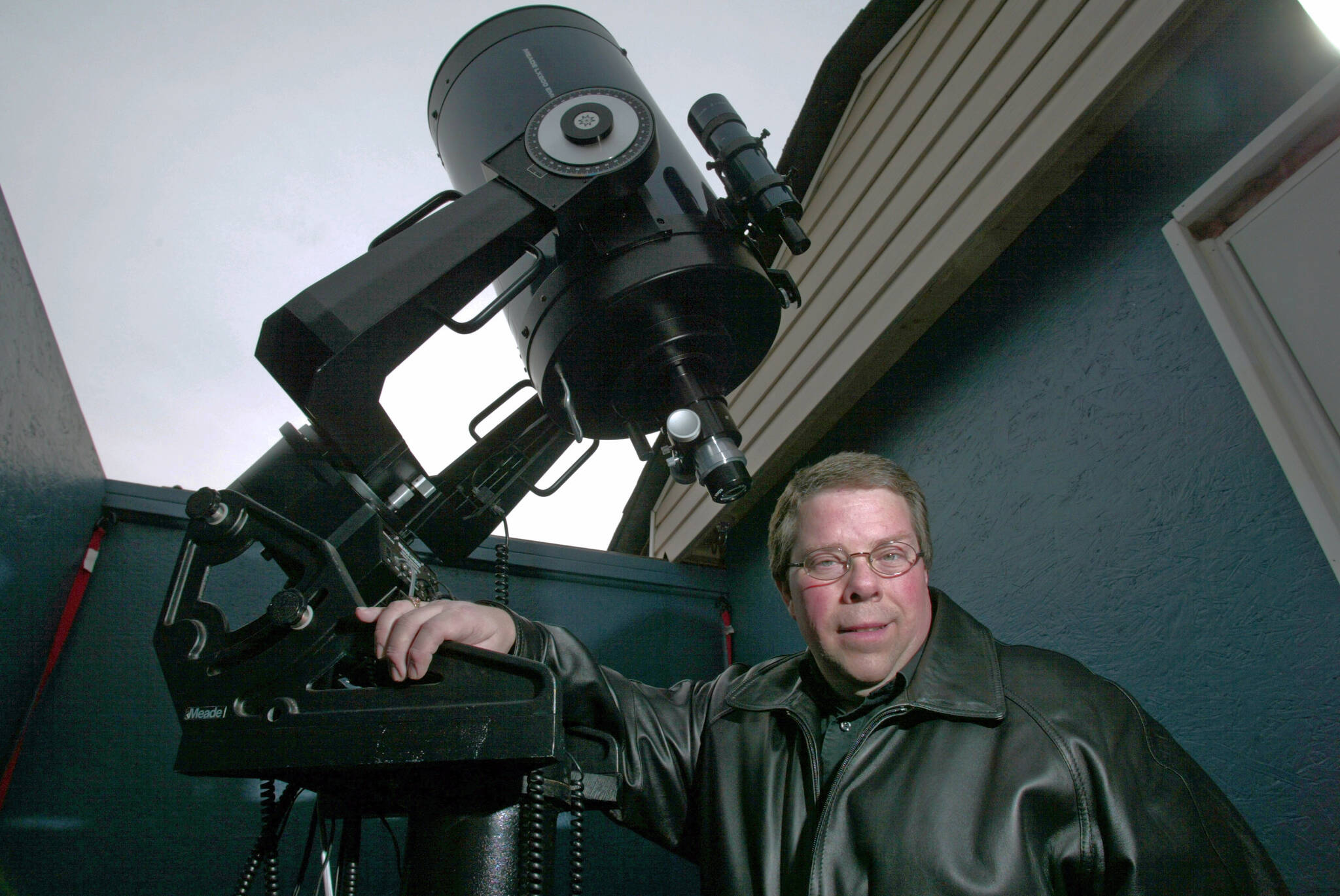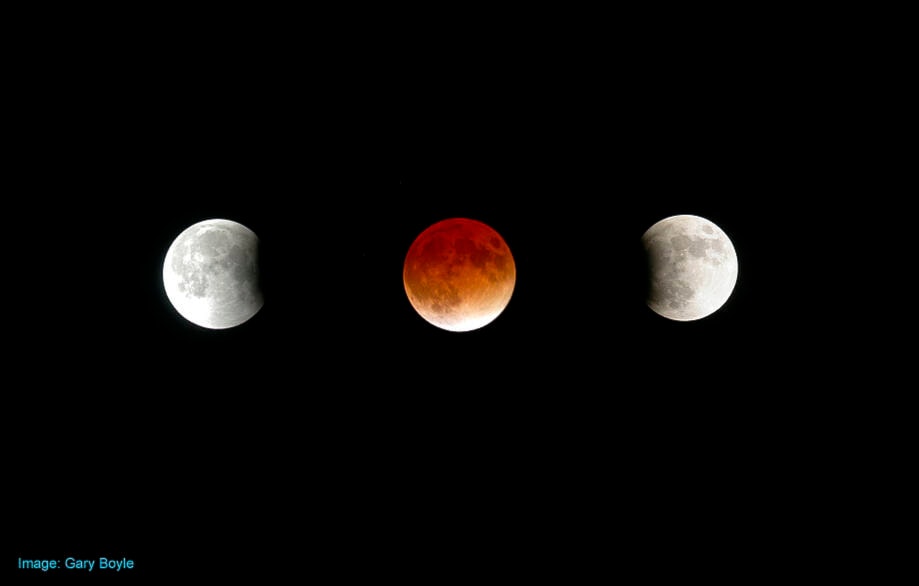By Gary Boyle, The Backyard Astronomer
Nothing is more magical than viewing a lunar eclipse. A few times each year, the full moon steps into the earth’s shadow for a few hours, leaving us with lasting memories. Such an eclipse will take place on the night of Nov. 18/19 with the Full Beaver Moon. This one will be extra special and appear very close to a total eclipse. Because of the geometry, the moon will be in the larger shadow of the earth except for a mere three per cent, leaving the edge in sunlight. A lunar eclipse is very safe to enjoy.
Even though it is not officially proclaimed total, the lunar surface will still exhibit darkness and some colour as typically seen in a total event. People commonly referred to this type of eclipse as a “blood moon”. If you were on the moon at the centre of the shadow during the mid-point of this eclipse, you would see an orange ring around the earth. From this vantage point, you would see sunlight refracting through our atmosphere, witnessing every sunset on the left side of the earth along with every sunrise on the right side at the same time.
For astrophotographers, the moon will be located amongst the bright winter constellations of Orion the Hunter, Taurus the Bull, and now too far from the Pleiades star cluster. The only drawback is its late hour.
In Creston, which is now observing Mountain Standard Time, the partial umbral eclipse will begin at 12:18 a.m. when the moon begins to enter the shadow. The greatest eclipse will be viewable at 2:02 a.m. when the moon will be 97 per cent covered. The partial umbral eclipse will then end at 3:47 a.m. when the moon has completely exited the shadow.
Happy moon gazing! Till next time, clear skies.

Known as “The Backyard Astronomer”, Gary Boyle is an astronomy educator, guest speaker and monthly columnist for the Royal Astronomical Society of Canada. He has been interviewed on more than 50 Canadian radio stations as well as television across Canada and the U.S. In recognition of his public outreach in astronomy, the International Astronomical Union has honoured him with the naming of Asteroid (22406) Garyboyle. Follow him on Twitter: @astroeducator or his website: www.wondersofastronomy.com.
